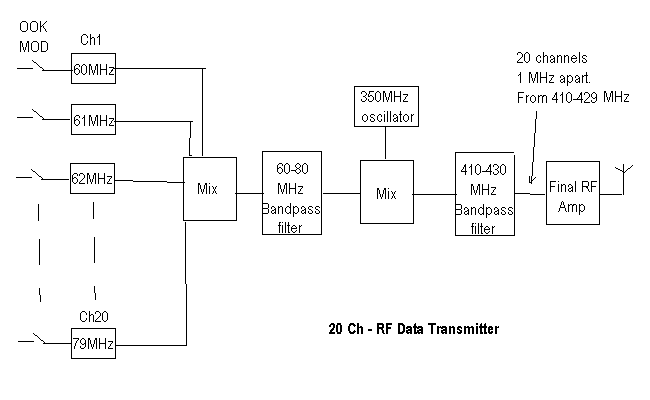Kaspars
Junior Member level 1
Hi,
I'm working on wireless communication and faced some problem. I have to send wirelessly asynchronous binary signal, and I decided to do that using OOK modulation. When I use one resonator with frequency 433MHz everything works fine. But I have 10 channels and I need 10 different frequencies. Maybe some one know how can I generate them without using clk? For example 432MHz, 433MHz, 444MHz ect... Yes I know, there exist Volatage controlled oscillators, but they ar too expensive, so maybe there exist another possibilities? (Waring: My signal is asynchronous, so there are not bits length, switching from 0 to 1 and 1 to 0 is random and can be in any time moment).
Also How in practice is possible to get, for example, 64 OFDM cerrier frequencies? What is used? PLL?
Thanks.
I'm working on wireless communication and faced some problem. I have to send wirelessly asynchronous binary signal, and I decided to do that using OOK modulation. When I use one resonator with frequency 433MHz everything works fine. But I have 10 channels and I need 10 different frequencies. Maybe some one know how can I generate them without using clk? For example 432MHz, 433MHz, 444MHz ect... Yes I know, there exist Volatage controlled oscillators, but they ar too expensive, so maybe there exist another possibilities? (Waring: My signal is asynchronous, so there are not bits length, switching from 0 to 1 and 1 to 0 is random and can be in any time moment).
Also How in practice is possible to get, for example, 64 OFDM cerrier frequencies? What is used? PLL?
Thanks.
